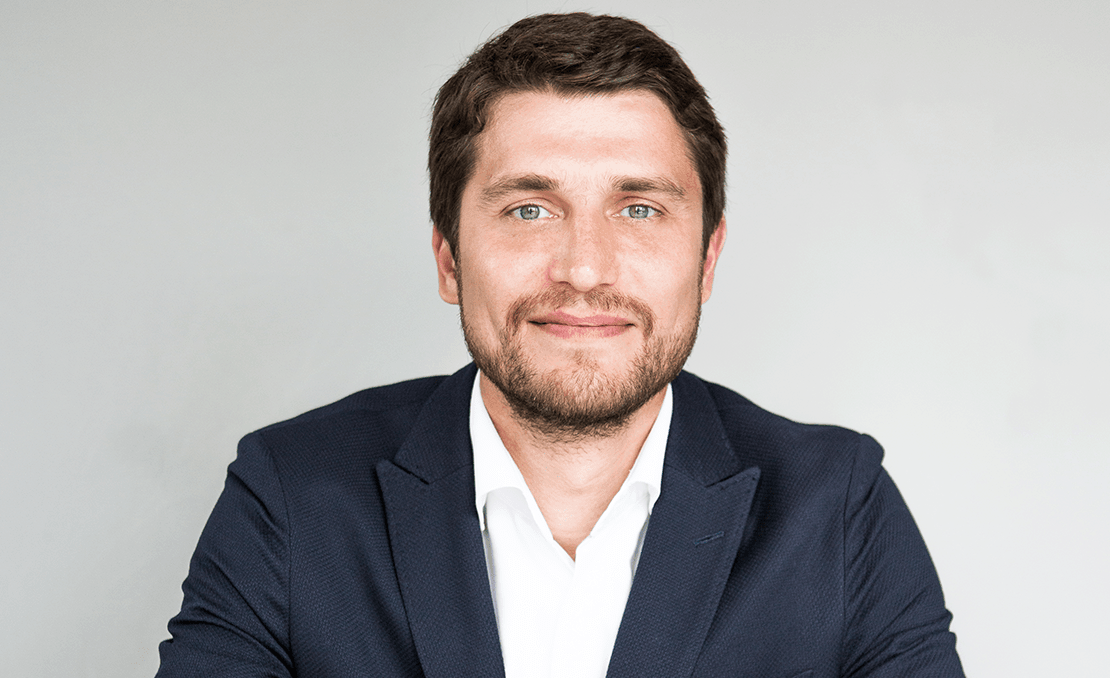8Aug2017
Borrowing and lending money is becoming a completely different experience from the traditional transactions that you are likely familiar with at your current bank. Welcome to peer-to-peer (P2P) lending: a new method of debt financing that allows people to borrow and lend money without a bank. Harnessing high-tech innovations and big data, P2P platforms connect borrowers to investors faster and cheaper than any bank and offer higher returns on investment — provided that the borrower does not default. Among Europe’s top P2P lending players is Latvia’s TWINO. Founded in 2009 by a handful of exuberant and young local entrepreneurs, it has evolved into a major powerhouse in the market. TWINO Investment Platform lead Jevgeņijs Kazaņins sat down with the Nordic Business Report to discuss their success and shed light on a few challenges ahead.
Nordic Business Report: What is TWINO all about? Can you talk a little about the conception?
Jevgeņijs Kazaņins: Our business is to connect investors who are looking for premium returns with borrowers who are looking for convenient loans. So, we have created two platforms – one for investors, TWINO Investment Platform (www.twino.eu), and one for those looking to borrow, TWINO Lending, which operates in 6 countries.
The majority of loans we issue are funded through our peer-to-peer TWINO investment platform where individual investors all over Europe invest to earn premium returns and diversify their portfolios. Our proprietary technology allows us to process credit applications, finance and issue loans without the need for a network of branches, an army of clerks or a mountain of paperwork. For us, this means lower costs.
NBR: What do you find most fascinating about TWINO?
JK: I came to TWINO right after the launch of the investment platform in 2015. Being part of a successful company, I cannot appreciate the opportunity given to me anymore — it has been a huge privilege for me to be with TWINO. Few startups have been off to the success we enjoyed. I am thrilled to see the company grow and my mission is to facilitate its expansion in Europe. We‘ve been pretty successful with the endeavor and that is what really excites me.
NBR: Statistically, only one out of ten Baltic startups manage to make it through the first three years. What is behind your success story?
JK: TWINO is a very special thing, I believe. Indeed, we‘ve been around for quite some time now. What is at the core of our success is that, from the beginning, we sensed very well what the borrowing and lending market needs and anticipated its evolution well. Thence, the changes of the business‘ model we did and the speed we‘ve taken.
In the beginning, we were relying on our own capital, and the balance sheet was always handy to take a look at. But gradually we moved to the model we have now: marketplace lending. I believe the most trying times are in the past already as we‘ve firmly aimed at growth in the lending market.
NBR: Who is your average investor?
JK: The average investor is pretty young, of around 33 years of age. The sheer majority of investors are male; we have very few women on our platform so far. Our key markets are Germany, UK, the Netherlands, Estonia, and Latvia. These countries are known for the long standing P2P lending traditions. It is heartening and encouraging to know that many investors sign up with TWINO after trying out many other similar platforms. It means we are in the right direction!
NBR: What do you believe is TWINO’s edge over other peer-to-peer platforms?
JK: When in 2009, marking our start, we looked at P2P lending’s very first years of 2005-2006, we spotted a number of challenges for investors when it came to raising necessary assets for investments. For instance, one of the challenges that the investors were facing was default risks. Therefore, one has to understand how crediting works in the business very well, how to evaluate the borrower’s performance, and how to make a decision on which types of loans to invest in.
TWINO heeds much to providing investor protection guarantees, thence we have BuyBack guarantee and Payment guarantee, which are applied to different types of loans. Under the BuyBack Guarantee investor protection scheme, TWINO will compensate the investors both the invested principal amount and interest, as well as pay the accrued interest in case a borrower is late with the repayment for over 30 days.
Payment guarantee was launched pretty recently. Under this protection scheme, we offer very forecastable cash-flow to investors, as TWINO acts as a guarantor to the borrower and is ensuring that investors receive loan repayments on time — even if a borrower is late with the payment. With the guarantees in place, we essentially take away credit risks from investors. With them available, it is much easier to invest.
Of the continental European platforms, TWINO is unique in that we also offer investments hedged in British Pounds to reduce currency risk for UK lenders.
At the British lending platforms, you can get the yield in the range of 3-4 per cent per year for individual lenders and 6-7 per cent for business lenders. The situation is similar in Germany and France. TWINO lends in the countries that have higher rates on the consumer side, which also means higher rates for the investor. Thence our yield, or the return to the investors, is over 10 per cent on their investments, which is on the high end in the industry.
Last but not least, what singles us out is our diversification. Different from the other platforms which usually operate in one market, we work in many of them. We operate in Europe, Russia, Kazakhstan, and some other countries.
Since December 2016, TWINO has been offering lenders the opportunity to invest in Russian loans. These are at a huge interest to the borrowers, over 100%, but after defaults and TWINO’s fees, it’s expected lenders will earn around 14%. After the sanctions were placed on Russia following the Crimean annexation, I felt there was an opportunity for TWINO to step in and now it appears that it was the right thing to do.
NBR: TWINO Group CEO Armands Broks boasted in a May interview that TWINO is a No. 3 peer-to-peer platform in all of Europe. Has the situation changed since then? How empowering and demanding is the achievement?
JK: Currently, there are three countries that are clear frontrunners in Continental Europe – Latvia, France, and Germany. Younited Credit from France and Auxmoney from Germany were leading the industry for the last few years, but recently we, TWINO and Mintos, have caught up.
The key advantage for Latvian platforms is the alluring returns of more than 10% per annum, while platforms from Germany and France usually offer something between 5 to 7% per annum. Yet, the situation in the P2P market is subject to daily fluctuations and changes. The battle over leading positions has been ongoing, and it feels good to know that we’ve kept up the top positions. The exact place does not matter to me. What matters most is that we are still among the most capable in funding loans.
NBR: Some banking experts say paying interest rates in the range of 10 to 13% is unsubstantiated and cannot be done for long. How would you respond?
JK: On our lending business side, we charge higher interest rates than the above-mentioned 10 to 13%, thus we are capable of offering such rates to our investors. As a matter of fact, we have been profitable for several years, which clearly indicates sustainability of our business. Banks, of course, have the advantage of having access to cheaper capital that they can raise from deposits. However, our upside is no fees, great returns, and much better customer experience.
NBR: In Latvia, all savings up to 100,000 Euros are insured by the state. What about my money invested with TWINO?
JK: P2P lending is all about investing, growing capital and gaining a higher yield on your investment – not depositing money. Therefore, the European Deposit Insurance Scheme applied to bank deposits across the Euro-area is not applied to P2P lenders, understandably. However, we are working together with Latvia’s lawmakers to create a regulation for our industry as well.
NBR: The Latvian banking sector has been through some turbulent times in the past, with some banks having been appropriated by the state as a result. Against the backdrop, the success story you‘re sharing proves a money market startup can beat the odds and circumnavigate through all the rifts along the way. Does the Latvian Government intend to tighten the rules for P2P lending platforms?
JK: The Latvian Ministry of Finance and the industry discuss regulation aiming the local P2P market. There are some legislative initiatives focusing on enforcement of tougher money-laundering regulation, etc. At this point, I believe, it is too premature to prognosticate where the initiatives can go and how they can affect us and the market on the whole. Note, they do not necessarily make me uneasy – I’d rather think that, with them turning in our favor, we’ll see a boost in growth and we will see further acceleration. Yet, I agree if it all goes the wrong way for us, the lending industry can stagnate or disappear altogether in the worst scenario. I am sure that is not the case with the best industry participants.
Over the last three years, many P2P platforms like ours were launched. However, there is one fact I want all to think of: the volume of loans funded through these kinds of platforms is bigger than that in Germany or France. Latvian P2P platforms contribute around 40% of the consumer P2P market in Continental Europe.
As we‘ve proved ourselves in the business as trustworthy players, now, I believe, the quintessential question is this: what happens next with us?
NBR: Can you talk a bit about what you see ahead for you…
JK: I personally believe that we are at the very beginning of growth, although we‘ve built a very strong foundation already. If you were to look at peer-to-peer lending in Continental Europe, its volume is just over €1 billion, so the concept is still pretty young and small in comparison with traditional bank lending that has around €1 trillion in unsecured consumer debt on their books. So, there are definitely great possibilities ahead in acquiring new segments of customers and providing prompt quality services.
________________
The variety in lending and borrowing, with the incentive of higher financial earnings, works well both for the lenders and borrowers. Moreover, the lack of regulatory measures means that the P2P market is still growing and is predicted to continue to thrive.


